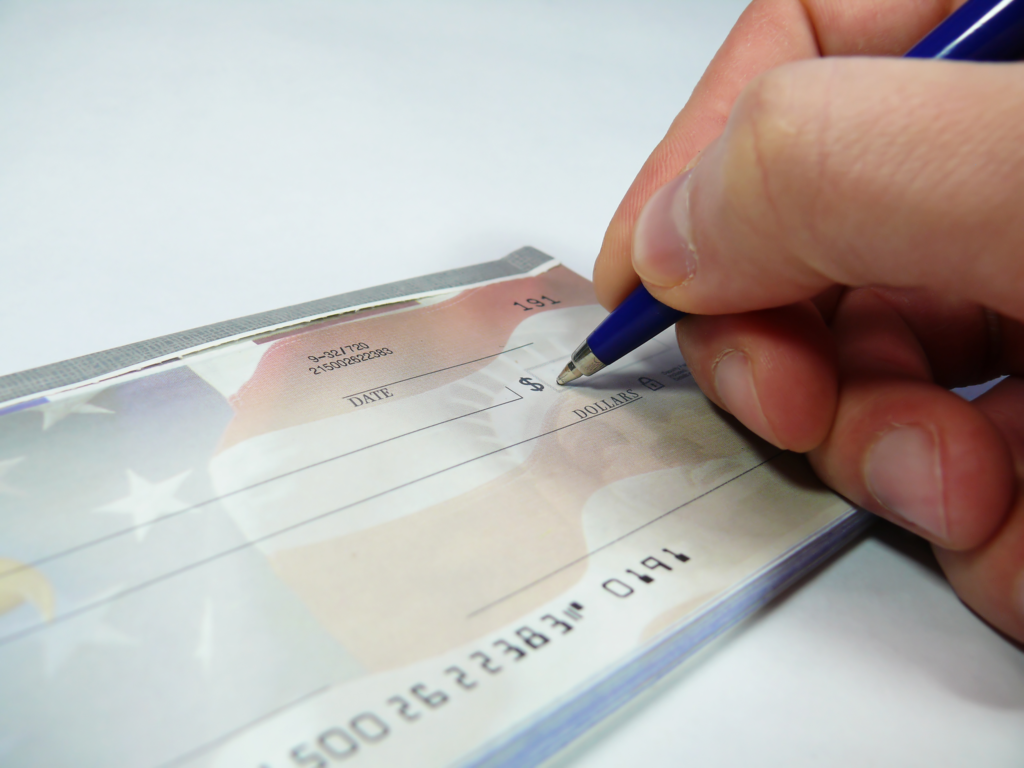Checkbook Control Logistics
Once you’re established your Solo 401k plan, you’ll generally fund the plan from rollovers or contributions. But where does the money actually go after you’ve setup your retirement account?
Documents and Records
Your Solo 401k plan is the set of documents your plan sponsor prepares for you. And the Solo 401k has a lot of documents included!
While the Solo 401k documents are critical, you still need a place to hold your retirement funds. Even though you’re the plan trustee, you can’t simply keep your 401k money under your mattress. Let’s explore some of the most common places to put your money after you open the Solo 401k.
Bank Account
Many account holders will open a bank account for their 401k trust as one step toward checkbook control in the Solo 401k. Technically you can use any bank since the account is simply a trust checking account to hold your money. Your real Solo 401k account is your set of IRS-approved documents. The bank account is simply a depository for your funds.
However, not all banks are familiar with or supportive of the self-trusteed retirement structures. Fortunately, there are a couple banks who specialize in self-directed Solo 401k banking:
- Titan Bank: located in Texas, online banking, mobile app banking, FDIC insured, clients in all 50 states.
- Solera Bank: located in Colorado, online banking, mobile app banking, FDIC insured, clients in all 50 states
As an added bonus, both of the above mentioned banks waive their fees for Nabers Group Solo 401k clients.

You might have just one bank account, or a few. It is generally recommended each participant have his own bank account. Therefore, you and your spouse might have two bank accounts under your one Solo 401k plan. Similarly, most CPAs recommend you keep differently taxed funds kept separate as well. So, you might end up having a bank account for traditional 401k funds, and one for Roth 401k funds.
Open the account(s) in the name of your 401k trust and the associated 401k trust tax ID number (EIN) your document provider has obtained for you. Even if you have multiple accounts, they’ll all be titled in the name of your one 401k trust.
Helpful hint: If you have multiple bank accounts under your 401k trust, use online banking to assign a nickname for traditional and Roth funds, and your spouse’s accounts.
Brokerage Account
If you’re interested in access to traditional investments, such as stocks, bonds, ETFs, and publicly traded funds, you’ll want a brokerage account.
While some brokerage firms offer a type of 401k plan, it often lacks the benefits of a truly self-directed Solo 401k. Namely, these plans don’t offer participant loans, Roth options, voluntary after-tax contributions, or the ability to invest in alternative assets.
So what are you to do if you still want to invest some 401k money into traditional equities? Instead of opening a brokerage firm 401k, your Solo 401k would open a brokerage account.
These days, almost any brokerage firm will support a self-directed Solo 401k. Similar to the bank account, the brokerage account isn’t actually your retirement plan. It’s simply another place to deposit and invest your money. Title your 401k brokerage account in the name of your 401k trust and always use your 401k trust tax ID number on the account (not your social security number, and not your business tax ID number).
Checkbook Control
If you’ve set things up correctly, you’ll be the signor on the bank or brokerage account for your retirement plan. Having your money in a bank or brokerage account you control is what gives you checkbook control in the Solo 401k. Once you identify an investment for your retirement plan, simply write the check or wire the funds from the 401k trust bank/brokerage account to complete the investment.
Keep Good Records
Remember that you’re in charge of your Solo 401k plan. Having checkbook control in the Solo 401k means you have power over your retirement funds. But, with great power comes great responsibility. Always keep good records of the Solo 401k plan. Work with a CPA who is familiar with the Solo 401k plan and ask your document provider for any relevant forms to make record keeping easier.
With the right team in place of helpful banker, brokerage firm, document provider and CPA you’ll be well on your way to checkbook control of your assets so you can invest your way to a brighter future.
Disclaimer: Bank resources are provided as a convenience and for informational purposes only; they do not constitute an endorsement or an approval by Nabers Group LLC of any of the products, services or opinions of the corporation or organization or individual. Nabers Group LLC bears no responsibility for the accuracy, legality or content of the external party or for that of subsequent services.





